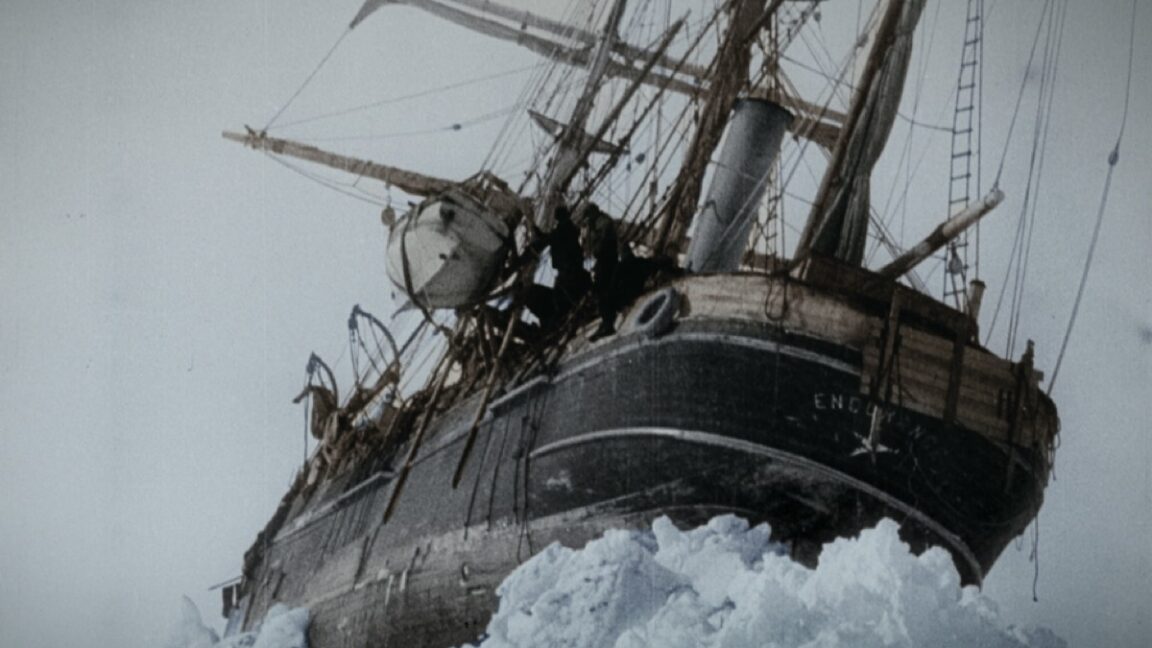Science
New Analysis Reveals Why Endurance Sank in 1915

In a groundbreaking reassessment of the sinking of the *Endurance*, new research indicates that the ship’s demise was not solely due to a broken rudder, as previously believed. Instead, the vessel succumbed to the immense compressive forces of the pack ice in the Weddell Sea, according to a recent study published in *Polar Record*. The findings challenge longstanding assumptions about the ship’s design and the circumstances leading to its tragic fate in 1915.
The *Endurance*, captained by British explorer Sir Ernest Shackleton, set sail from Plymouth on August 6, 1914. After becoming trapped in ice, the ship was abandoned in October 1915, eventually sinking on November 21, 1915. For decades, the prevailing narrative suggested that the ship, often considered the strongest polar vessel of its time, sank after ice broke its rudder. However, researcher Jukka Tuhkuri of Aalto University argues that the *Endurance* would have sunk regardless of the condition of its rudder.
Tuhkuri’s analysis stems from his involvement in the Endurance22 expedition, which discovered the shipwreck in 2022 and revealed its remarkably preserved state, largely due to the absence of wood-eating microbes in the frigid waters. The expedition’s exploration director, Mensun Bound, described the shipwreck as “in a brilliant state of preservation,” providing an invaluable opportunity for research.
Analyzing the Structural Integrity of Endurance
Tuhkuri’s investigation involved a thorough examination of Shackleton’s diaries and crew correspondence, as well as a naval architectural analysis of the *Endurance*. His research revealed that the ship was originally built for polar tourism and hunting, lacking the structural reinforcements necessary to withstand the extreme conditions of pack ice.
The *Endurance* was designed with a lower deck, a main deck, and a bridge deck, but lacked critical beam support in the engine room. Tuhkuri highlighted that “deck beams become of key importance” in compressive ice conditions, as they maintain the vessel’s shape. Without adequate support, the *Endurance* was vulnerable to being crushed by ice, even under circumstances where the hull might have seemed sufficiently robust.
Throughout its time trapped in the ice, the *Endurance* endured multiple ice compression events. For instance, on April 4, 1915, crew members reported loud rumbling noises as the ship vibrated against an ice ridge. By the end of October, the crew recognized that the ship was heavily listing, raising concerns about its stability.
On November 13, 1915, a pressure wave struck the *Endurance*, leading to significant structural damage, including the bow being crushed and the main mast snapping. This event, captured by crew photographer Frank Hurley, marked a critical turning point in the ship’s fate.
Shackleton’s Decision and Its Consequences
Interestingly, Tuhkuri’s findings suggest that Shackleton was aware of the *Endurance*’s limitations before embarking on the expedition. Historical accounts indicate that the dangers of compressive ice were well-documented among shipbuilders in the early 1900s. Shackleton had previously participated in rescue operations for other ships trapped in similar conditions, such as the *Antarctic* in 1903.
Despite this knowledge, Shackleton chose to proceed with the *Endurance*, which had been built without the diagonal beams that could have strengthened its hull. In a letter to his wife, he even noted the ship’s construction was inferior compared to that of the *Nimrod*, the vessel he used in a prior expedition. Tuhkuri posits that financial pressures or time constraints may have influenced Shackleton’s decision, but the full reasoning may never be known.
The *Endurance* ultimately sank due to a combination of structural vulnerabilities and the extreme forces exerted by the ice. Tuhkuri concluded that the rudder was not the primary cause of the sinking, stating, “The *Endurance* would have sunk even if it did not have a rudder at all.” This assessment marks a significant departure from the conventional narrative surrounding the ship’s fate.
The research underscores the importance of continued exploration and analysis of historical maritime events. Tuhkuri’s work not only sheds light on the *Endurance* but also serves as a reminder of the challenges faced by those who venture into the unknown, highlighting the harsh realities of polar exploration. The findings bring new clarity to a storied chapter in maritime history, offering insights that may influence future expeditions in similar environments.
-

 Science3 months ago
Science3 months agoToyoake City Proposes Daily Two-Hour Smartphone Use Limit
-

 Top Stories3 months ago
Top Stories3 months agoPedestrian Fatally Injured in Esquimalt Collision on August 14
-

 Health3 months ago
Health3 months agoB.C. Review Reveals Urgent Need for Rare-Disease Drug Reforms
-

 Technology3 months ago
Technology3 months agoDark Adventure Game “Bye Sweet Carole” Set for October Release
-

 World3 months ago
World3 months agoJimmy Lai’s Defense Challenges Charges Under National Security Law
-

 Lifestyle3 months ago
Lifestyle3 months agoVictoria’s Pop-Up Shop Shines Light on B.C.’s Wolf Cull
-

 Technology3 months ago
Technology3 months agoKonami Revives Iconic Metal Gear Solid Delta Ahead of Release
-

 Technology3 months ago
Technology3 months agoApple Expands Self-Service Repair Program to Canada
-

 Technology3 months ago
Technology3 months agoSnapmaker U1 Color 3D Printer Redefines Speed and Sustainability
-

 Technology3 months ago
Technology3 months agoAION Folding Knife: Redefining EDC Design with Premium Materials
-

 Technology3 months ago
Technology3 months agoSolve Today’s Wordle Challenge: Hints and Answer for August 19
-

 Business3 months ago
Business3 months agoGordon Murray Automotive Unveils S1 LM and Le Mans GTR at Monterey









